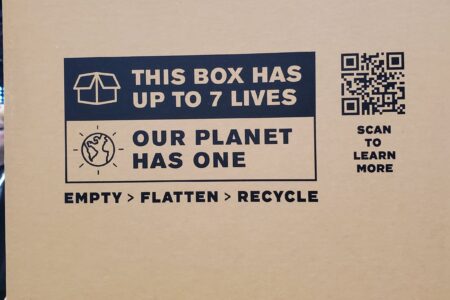Finding New Opportunities in RTD Coffee

I’m not really a ready-to-drink consumer, either tea or coffee. Apparently, I’m in the minority as the $14.4 billion United States coffee market is driven by ready-to-drink beverages and pod sales.
The Mintel Group projects that the market will reach around $18 billion by 2023. Ready-to-drink (RTD) remains a fast-growing category due to continued innovation coming from a variety of brands and broad consumer appeal. In fact, 2017 saw the greatest number of RTD coffee launches, and over half of those RTD coffee launches were cold brew. Another plus for the coffee market, the London-based global intelligence firm finds that RTD is an “also” beverage. That is, it is not the first coffee beverage, it’s an “add on.”
Starbucks introduced bottled Frappuccinos in 1996 with Pepsico. “It was not the first RTD coffee product, but it was really the first mainstream one,” said Caleb Bryant, senior beverages analyst, Mintel, who presented during the National Coffee Association (US) webinar, “What’s Brewing in RTD Coffee 2018?” He noted that the market did not really start expanding until the mid-2000s, with an explosion in coffee innovation coming in the mid-2010s.
RTD coffee appeals to a wide range of consumers, which is contributing to its growth. There has been an increase in cold coffee consumption by Gen Xers, but the primary consumers are young people. Bryant said younger consumers enter the coffee market through cold, flavourful coffee drinks. Data shows Generation Z or the iGen is starting to drink coffee at a younger age — even younger than millennials. “Younger consumers’ coffee preferences will change as they grow older,” he explained, so, it’s important for brands to target these consumers early and establish brand loyalty but follow them through their coffee lifestyle.
On a side note, according to Mintel, foodservice-brand RTD coffees such as coffee shop RTDs (Peet’s Coffee, Starbucks, McCafé, Stumptown, etc) are the most frequently purchased.
The future for RTD coffee remains strong as there are occasions for RTD coffees to break into new whitespaces. “Consumers are primarily buying RTD coffees for refreshment and as a treat (cold so refreshing on a hot day, a treat because they’re flavoured),” said Bryant. “Marketers can try to position them as a snack and as hydration.”
Cold brew remains a key area of opportunity as Mintel reports that 16% of respondents prefer cold brew to other iced coffee beverages. Beverage blurring is affecting all categories, including coffee –especially cold brew – and these “hybrid” drinks satisfy unique occasions. “Most have lower caffeine content than regular RTD coffees and are often sparkling,” said Bryant offering Blue Island Coffee’s Organic Kombucha Maca Cold Brew Espresso as an example along with Keeper’s Citrus Sparkling Coffee, Rise Brewing Co’s Nitro Blood Orange Cold Brew, Stumptown’s Honey Lemon Cold Brew Coffee, and Upfruit’s Ginger Hibiscus Sparkling Coffee.
Of course, for consumers, taste is still the leading indicator of quality. RTD drinkers are interested in unique flavour experiences. “Vanilla, chocolate and hazelnut are still the most popular but there are opportunities to engage third-wave consumers,” said Bryant. He pointed to alcohol as a flavour noting that alcohol flavours are an alternative to overly sweet coffees. Examples include Starbucks Gin Barrel Aged Cold Brew and Dark Matter Coffee’s Barrel Aged Series. He added that coffee mocktails may also provide inspiration for flavour innovation.
Floral flavours are trending in alcoholic and non-alcoholic categories and can be used in coffee beverages as well, such as a rose or lavender latte.
Bryant shared that RTD coffee brands can also appeal to third-wave consumers through feel-good claims. RTD coffees that focus on sustainability, are environmentally friendly, engage in ethical sourcing, “give back,” are organic (Chameleon Organic Cold Brew Coffee with Organic Whole Milk is an example), are Fairtrade and/or Rainforest Alliance-certified or non-GMO, will attract third-wave coffee drinkers.
Functional RTD coffee is yet another opportunity for brands, which can differentiate themselves through health claims. Consumers are looking for coffees that offer a multitude of functional benefits such as anti-oxidants, anti-inflammatory, low sugar, added protein, added probiotics, promoting brain health, as well as low caffeine and high caffeine. “There is a disconnect as many consumers are interested in RTD coffees that help them relax but many also want high caffeine,” said Bryant. Examples include Stok Espresso Creamed Protein Coffee, High Brew Cold Brew + Protein Coffee, Coffee Blenders Lean Weight Wellness Cold Brew, and Wond’er Fuel Coconut Oil Cold Brew Coffee.
RTD coffee drinkers crave innovation and there are many new areas where RTD coffee brands can find inspiration and innovate — and innovation leads to increased consumption, and in turn, increased revenues and market growth.



